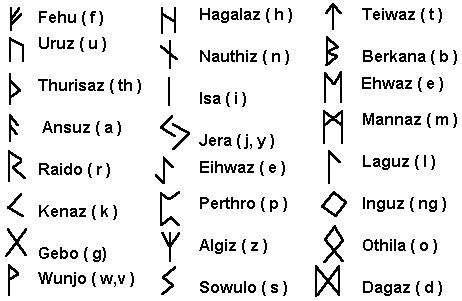|
The Word "Rune" carries with it the denotation
of "secret" or "mystery."
In Olde Norse, run means
"mystery." In Olde Irish and Scotch Gaelic, run means "secret" or "mysterium." In middle Welch,
rhin has the same inference. In the ancient indo-european Mother-tongue the root of rune is
reu, "to roar," and in contemporary German, raunen means to whisper.
Historians disagree on when runes first came
into use. Since the first objects inscribed with runes date to the second and third centuries A.D., some surmise that the
runic alphabet arose during the first century A.D. Scholars concur that runes grew out of an earlier alphabet, but which one
is unclear. A likely candidate is the Etruscan alphabet. Many argue that the geographic proximity of the Etruscans, who lived
in northern Italy, to the Germanic tribes of northern Europe makes it likely that these two groups had some form of cultural
exchange. Also, similarities exist in some letterforms of the Etruscan and runic alphabets. Another possibility for a source
alphabet is Latin. Those who subscribe to this theory believe that the numerous commercial contacts between the Germanic tribes
and the Roman Empire during the first century A.D. exposed the former to the Latin alphabet. The Northerners may have simply
borrowed the Roman letters and adapted them to their needs.
The Scandinavians had their own explanation for the appearance
of the runes. According to legend, Odin, chief of the Norse gods, speared himself to a tree in a self-sacrificial attempt
to receive occult knowledge. As he hung suspended for nine windy nights, he learned the mysteries of the runes, which he then
passed on to his people. Since Nordic peoples believed the runic script to be a gift from Odin, they treated it with great
reverence. Belief in the divine origin of the runes also contributed to the idea that runes possessed magical powers.
 |
|

The Elder Futhark

The All Father, Odin, Oden, Woton,
Odhinn.
 |
 |
|
|
 |
|
|
|
|

